Tripping Through France - Chapter 8
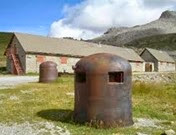
In the 19th century, after the various regions in Italy unified into one big country, the French were concerned about protecting their border against potential invasion. Thus, they started developing a few military outposts along their alpine frontier. Over the years, they enlarged their installations, and we came across a number of military "ghost towns" along our very high-in-the-sky route.
 |
| Part of the Alpine Maginot Line |
Around 1890, they started constructing actual buildings. I think before that they only camped out in tents. They got even more serious about defense and built the Alpine Line, which was called the Little Maginot Line. The Maginot Line was a series of defense forts built against Germany, which turned out to be a major failure, despite being a fairly good idea. However, the Alpine Line was apparently adequately effective in defending against Italy. And today there are remnants of the lives of those who were involved at that period of time. It was rather sobering to see what was necessary for the defense of one's country against a potential enemy.
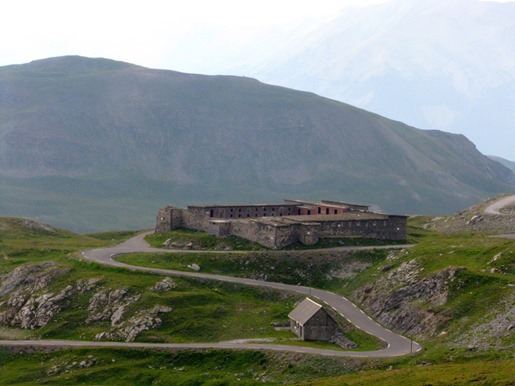 |
| Fortin du Restefond |
I've seen these kinds of bunkers along the coast on the English Channel, built by the Germans, but these are French ones built against the poor Italians. Imagine!
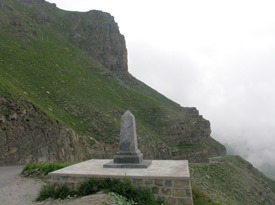 |
| Don't stand here in a storm |
An interesting story we came across was this point where lightning struck a general who was supervising summer maneuvers in 1936. Not only does this monument commemorate the event, but it also serves as a reminder to everybody today about the dangers of storms in the heights of the mountains.
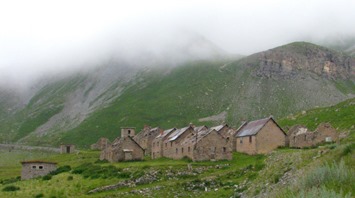 |
| Camp des Fourches of the Diables Bleus |
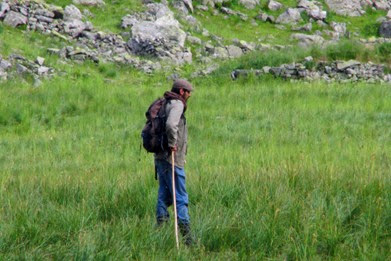 |
| A modern shepherd |
While these old military installations are reminders of past sentinels in this area, there is a completely different type of sentinel on watch today. Cars may be allowed to pass through, but sheep definitely rule!
We have found ourselves surrounded by various beasts on public roads over the years, but it's always rather startling, especially when there are so many of them.
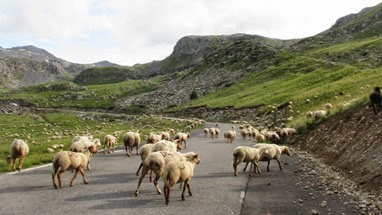 |
| We own the road! |
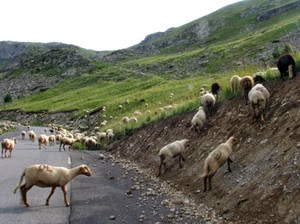 |
| Why take the easy way up? |
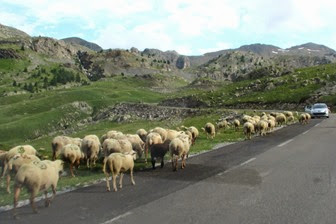 |
| Moving on time |
These are not rocks all over the ground, they are sheep! There can be over 2,000 of them in any given year. And they don't seem to be bothered by human interaction.
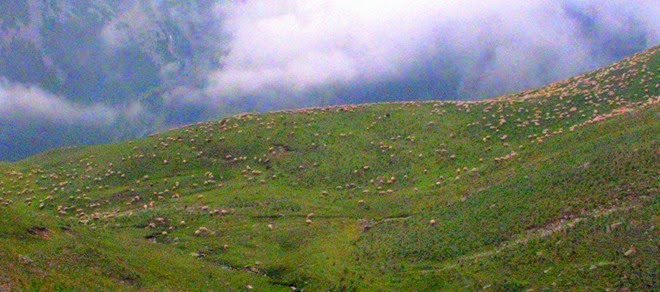 |
| Keeping the mountain mowed |
I'm not sure if this guy we came across much further up was working in tandem with the first one we saw walking alongside the flock or if he was overlooking a different group. I can't imagine how they can just stand there all day long looking at sheep, but this one took out a pair of binoculars to observe something, so their eyes must get a lot of exercise if the rest of the body stays fairly motionless.
As we left the past and the present guard of the mountains behind, we reached the last stretch of road before arriving home in a liquid cloud. While it had been a very eventful trip up and back down the country lasting 11 days, rather than a quick zip up and down possible in nine hours each direction, it was good to get back to our waiting kitties, who were definitely happy to see us again.
When one can't feed naturally on the mountains, farmers are needed. Next time I'll show you how we saw their handiwork in action all across the country.

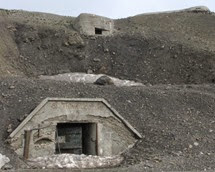
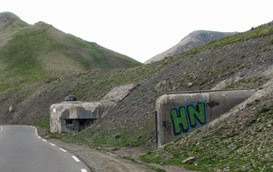
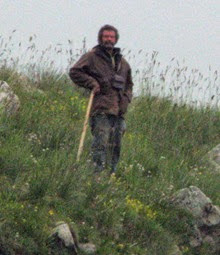
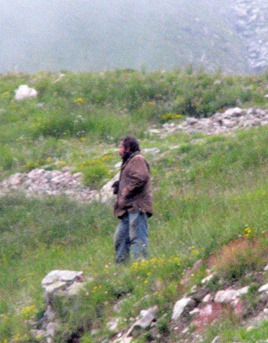

These are fascinating. I really appreciate that you are finding the history to go with these pictures. So enjoying your trip with you!
ReplyDelete